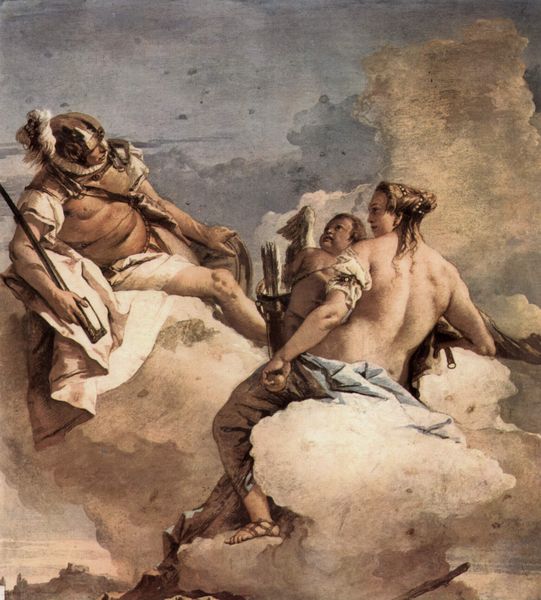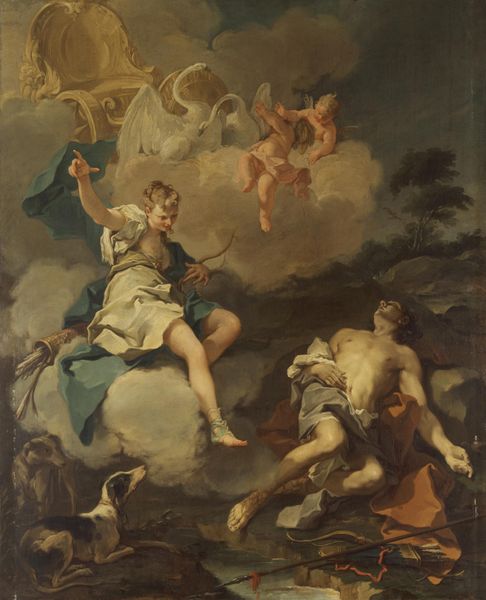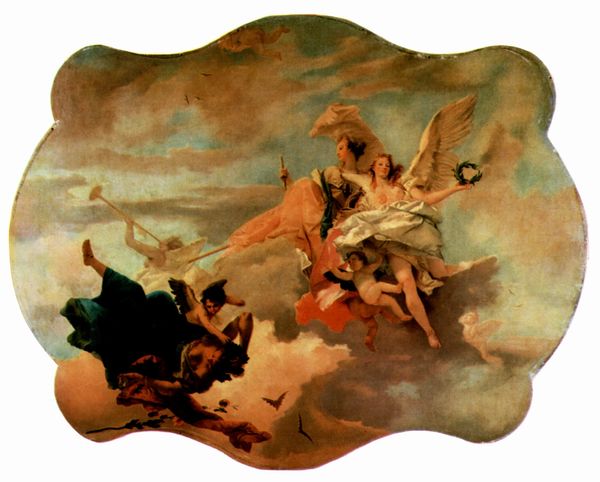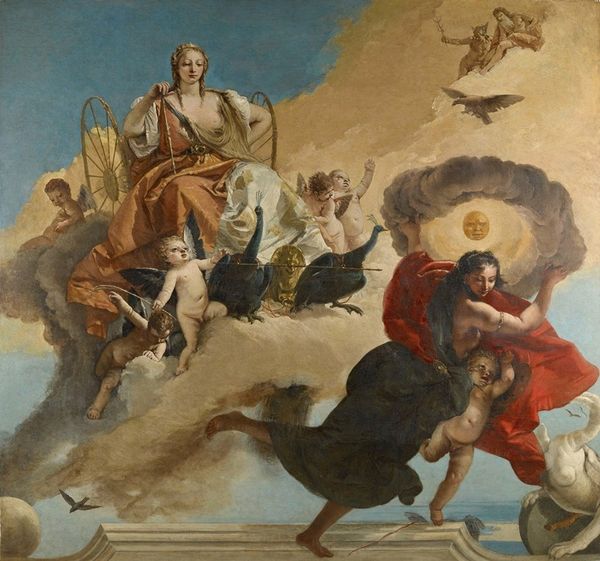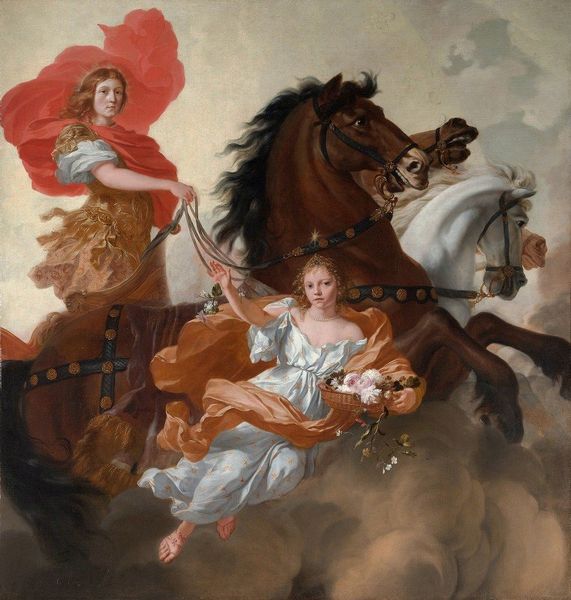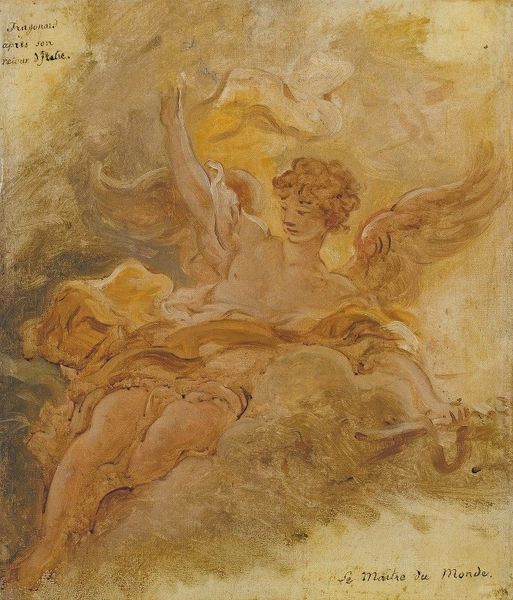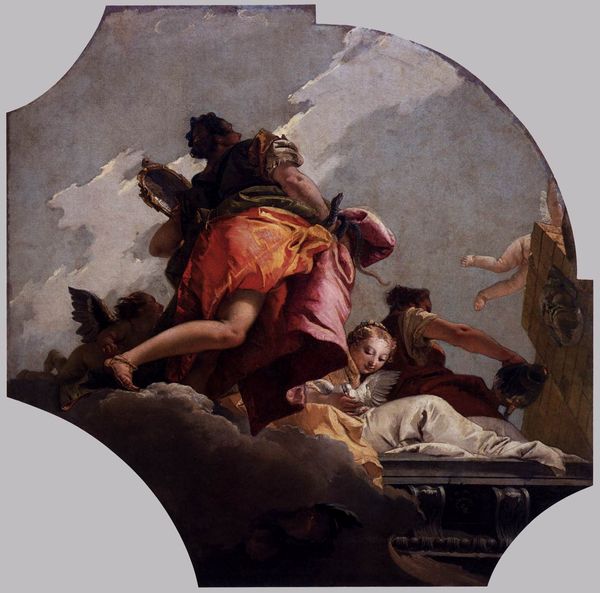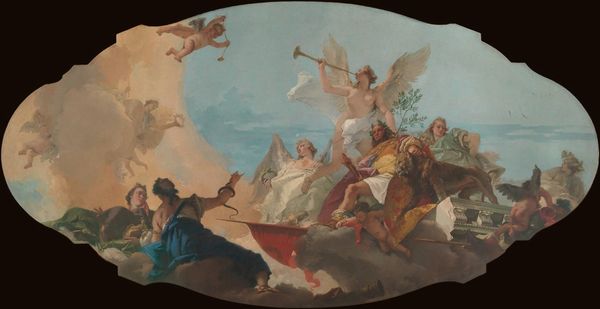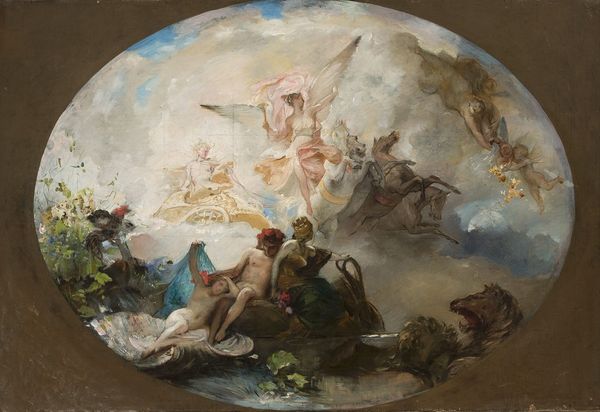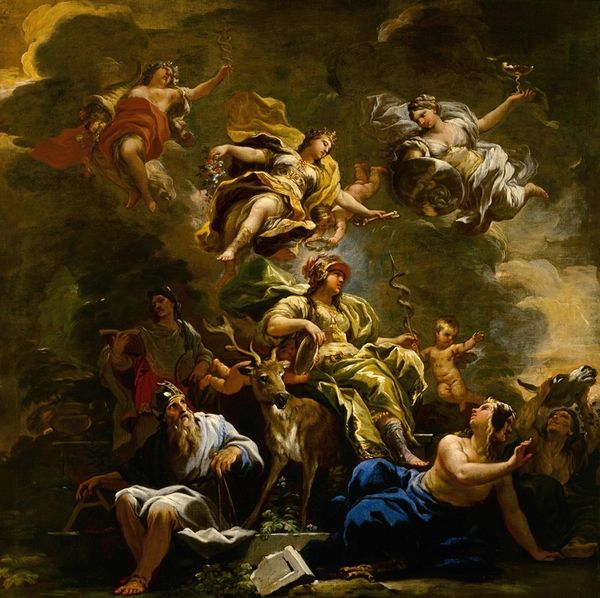
watercolor
#
allegory
#
figuration
#
oil painting
#
watercolor
#
roman-mythology
#
mythology
#
history-painting
#
rococo
Copyright: Public domain
Editor: So here we have Giovanni Domenico Tiepolo's "Apollo and Diana" from 1757, made with watercolor. The pastel-like quality gives it such a dreamy and ethereal quality, and they are seated on clouds... How do you read into this piece? Curator: Well, focusing on the material conditions, look at the widespread use of watercolor during the Rococo. It wasn’t just about aesthetics. It’s crucial to recognize watercolor as a cost-effective choice, facilitating faster production in Tiepolo's workshop, catering to a growing market for art. What does that say about artistic patronage and consumption at that time? Editor: That's a very different reading from what I was expecting. So, the *material* allowed for quicker replication for sale, kind of democratizing the image of these mythological figures? Curator: Precisely. The choice of watercolor directly speaks to the changing social and economic circumstances surrounding art production. Instead of grand oil paintings commissioned by the aristocracy, you have more affordable works aimed at a broader clientele. The implications are that classical education and iconography were becoming more accessible to those beyond the elite. What did these images *mean* to someone buying this? Were they status symbols? Or something else? Editor: Perhaps bringing the divine down to earth... into their own homes. So it's not just *what* is depicted, but *how* and *why* that truly matters? Curator: Exactly. Tiepolo's choice reflects larger shifts in the art market and social structure. By considering how it was made, we gain insights into art’s evolving role in 18th-century society. Editor: I hadn't considered how deeply materials are embedded in a work's social meaning. Thanks! Curator: It gives new insight, and there is still much to discover.
Comments
No comments
Be the first to comment and join the conversation on the ultimate creative platform.
